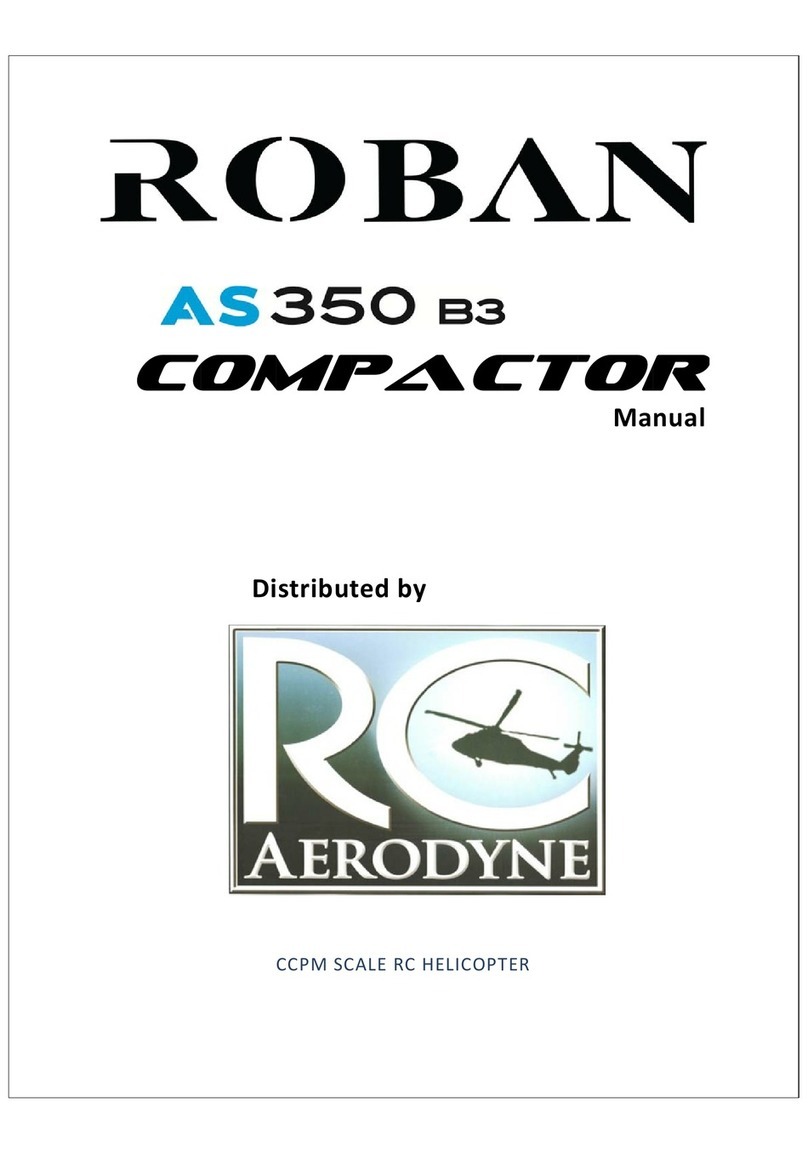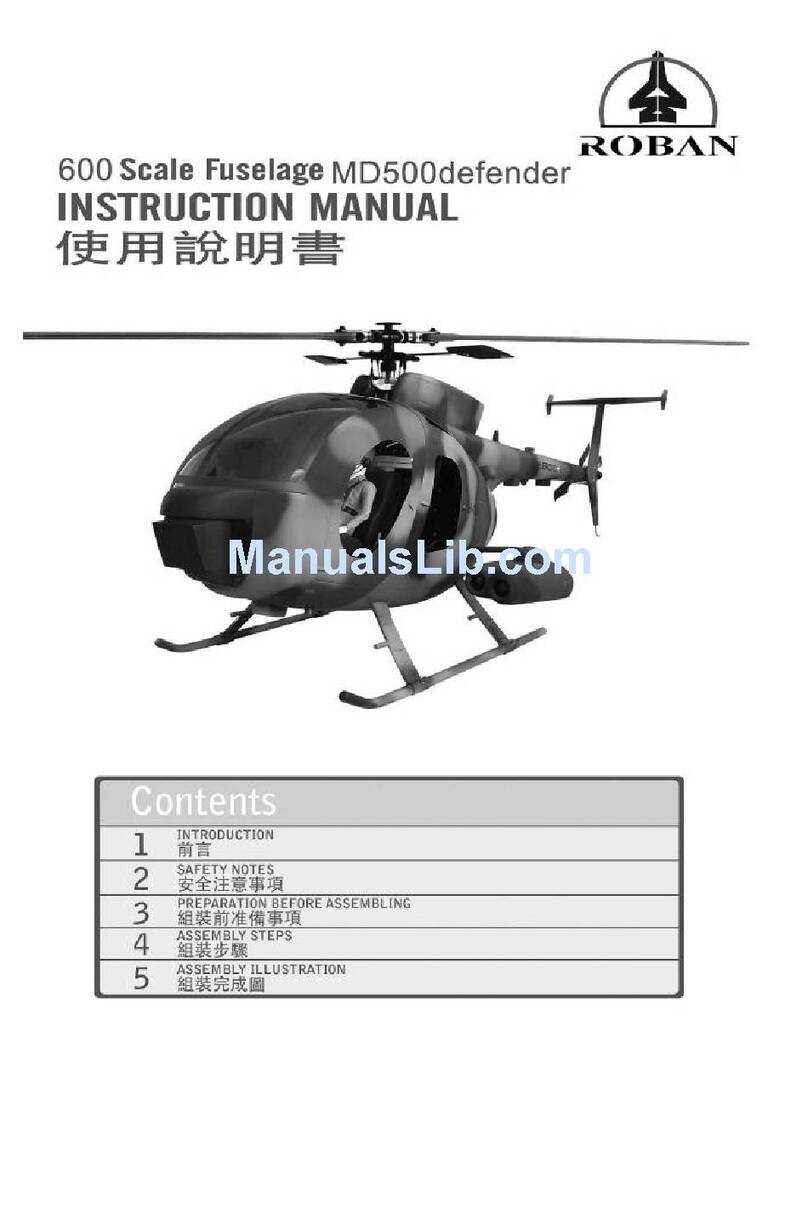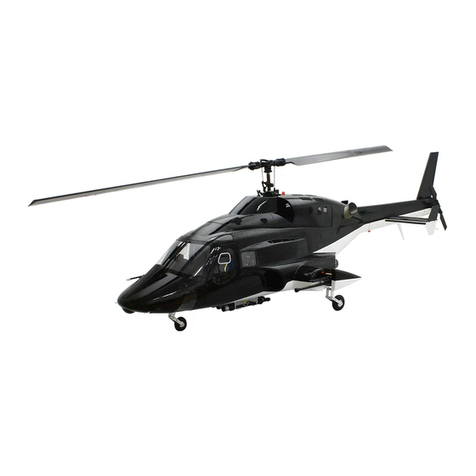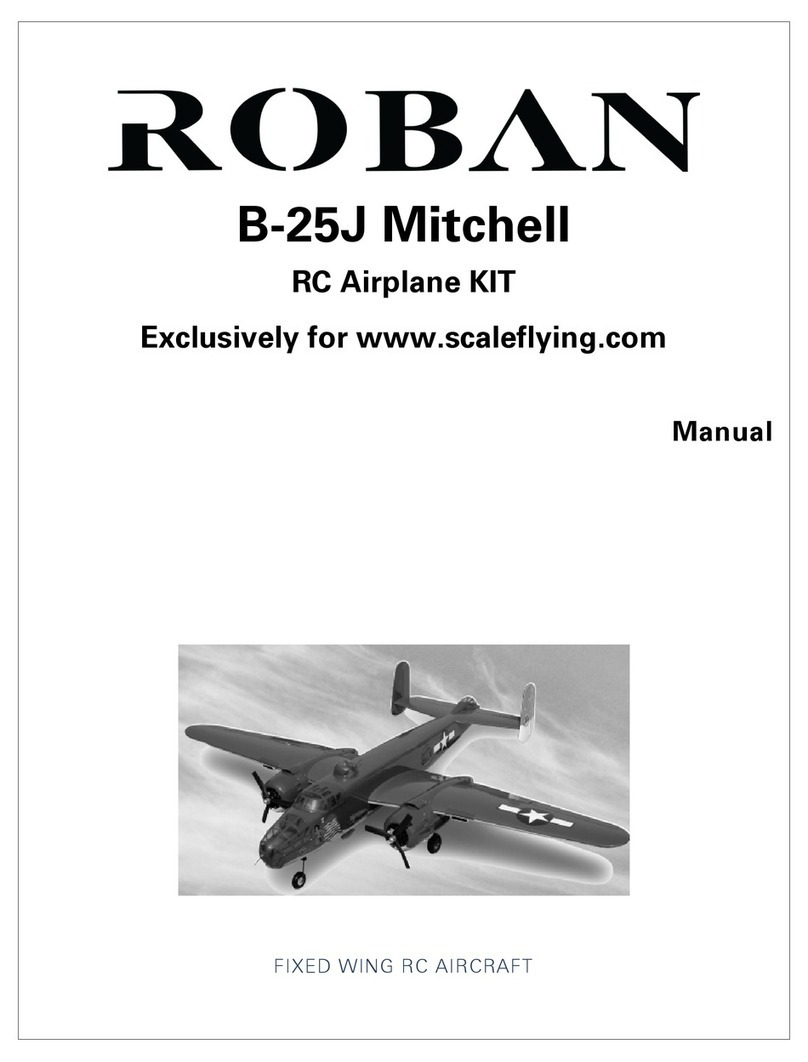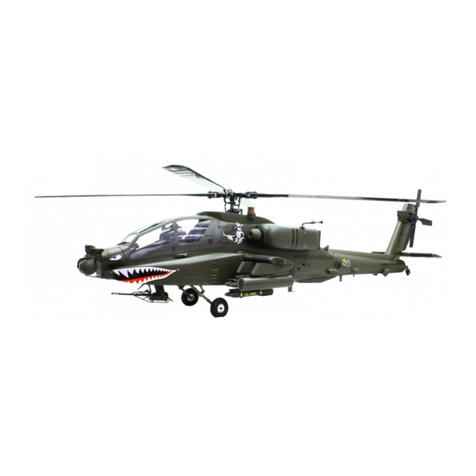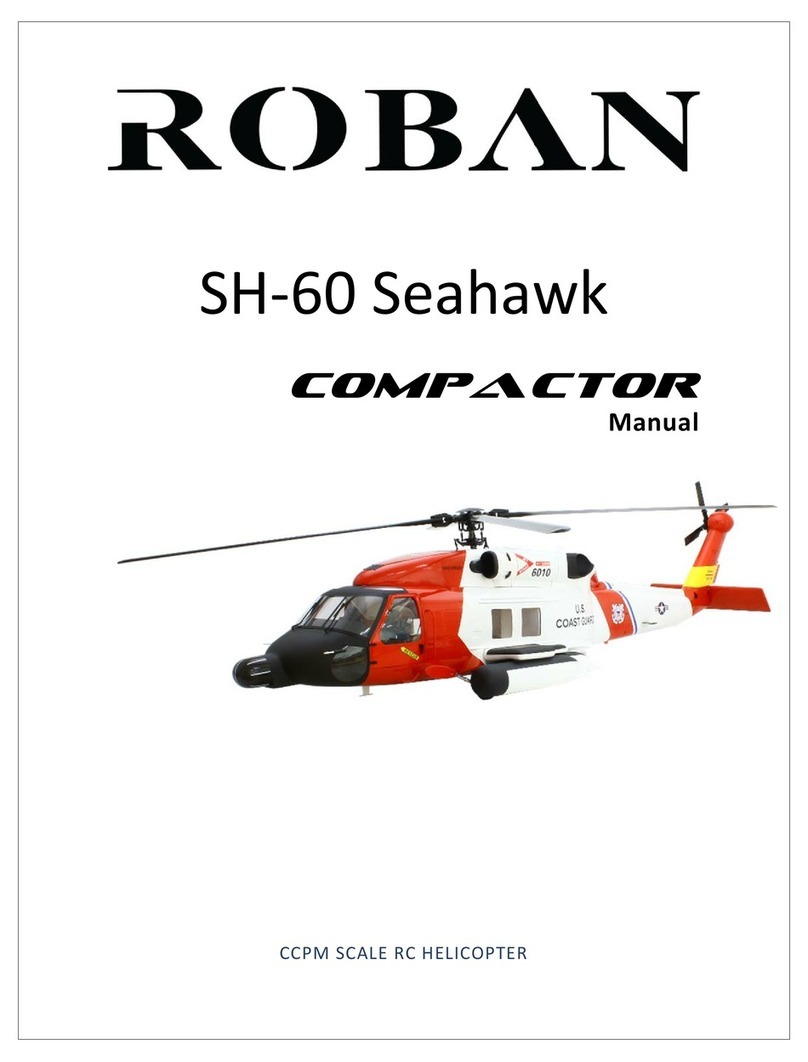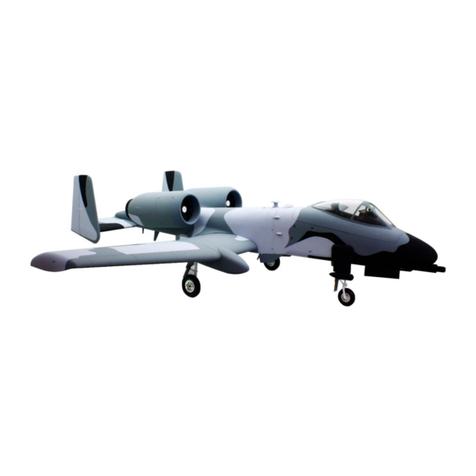Copyright@2013 - Roban Limited – All rights reserved
IMPORTA T OTES
*This radio controlled helicopter is not a toy.
*This radio controlled helicopter can be very dan erous.
*This radio controlled helicopter is a technically complex device which has to be built and handled very carefully.
*This radio controlled helicopter must be built followin these instructions. This manual provides the necessary information
to correctly assemble the model. It is necessary to carefully follow all the instructions.
*Inexperienced pilots must be monitored by expert pilots.
*All operators must wear safety lasses and take appropriate safety precautions.
*A radio controlled helicopter must only be used in open spaces without obstacles, and far enou h from people to minimize
the possibility of accidents or of injury to property or persons.
*A radio controlled helicopter can behave in an unexpected manner, causin loss of control of the model, makin it very
dan erous.
*Lack of care with assembly or maintenance can result in an unreliable and dan erous model.
*Neither Roban Limited nor its a ents have any control over the assembly, maintenance and use of this product. Therefore, no
responsibility can be traced back to the manufacturer. You hereby a ree to release Roban Limited from any responsibility or
liability arisin from the use of this product.
SAFETY GUIDELI ES
*Fly only in areas dedicated to the use of model helicopters.
*Follow all control procedures for the radio frequency system.
*It is necessary that you know your radio system well. Check all functions of the transmitter before every fli ht.
*The blades of the model rotate at a very hi h speed; be aware of the dan er they pose and the dama e they may cause.
*Never fly in the vicinity of other people.
OTES FOR ASSEMBLY
Please refer to this manual for assembly instructions for this model.
Follow the order of assembly indicated. The instructions are divided into chapters, which are structured in a way that
each step is based on the work done in the previous step. Chan in the order of assembly may result in additional or
unnecessary steps.
Use thread lockers and retainin compounds as indicated. In eneral, each bolt or screw that en a es with a metal part
requires thread lock.
Factory pre-assembled components have been assembled with all the required thread lock and lubricants,
and have passed quality control. It is not necessary to disassemble and re-assemble them.
We do not recommend the use of thin cyanoacrylate lue for surface mount of painted parts. The fumes of the curin lue leave
white stains on the clear coat, which are hard to remove.

